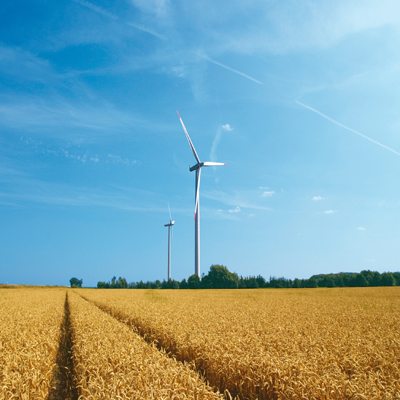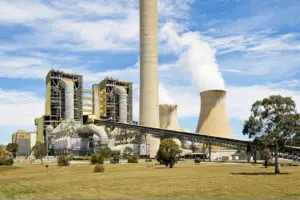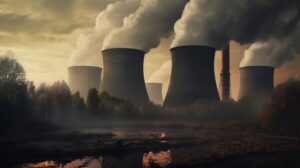The learnings from Denmark
Denmark’s wind and solar PV share of generation is much the same as South Australia, yet Denmark’s system is the most reliable in Europe and 3 times as reliable as NSW.
Denmark provides evidence that under the right circumstances high rates of wind penetration are completely achievable and at reasonable cost. More broadly, Europe produces 18% of its electricity from new renewable energy and this share is rising with 80% of new investment in renewables backed up by a range of laws and directives. Public support for Danish electricity policy in Denmark appears to be strong.
In our view ,there are a range of factors – some structural and some cultural – that explain Denmark’s success. Both structure and culture are important.
Structurally, Denmark has the advantage over South Australia because:
- There are vastly better interconnectors and plenty of hydro generation. On a net basis Denmark doesn’t import more than about 10% of its energy but there is much more flexibility in the import/export regime. (see figs 3 & 7). Because of exports running regularly thermal can run at steady capacity keeping the system smooth.
- Thermal generation can and is used for district heating in Demark, via combined heat and power [CHP] which lets the thermal power stations make money even though they lose money on generation. Each of the coal stations are gradually being converted to run on sustainable bio mass so that coal will be fully phased out by 2023.
- The larger size of the Danish market (3X the size of South Australia) means that a critical mass of thermal generation can be supported.
Culturally both the Danish network owner/operator [Energienet DK] and the main thermal generator owner [Dongenergy] are fully committed to wind and decarbonization. Dongenergy having been dominated by coal ten years ago will be completely coal free by 2023 and sees its future in building wind assets. Its much easier to manage the transition if everyone is on the same page.
Same problems but there are good answers old and new
Even with Denmark’s advantages, as the share of wind rises beyond 50% the same issues of flexibility, generation capacity, poor economics of the remaining thermal generation, frequency control and inertia are becoming more significant. As the problems arise so do the solutions. That is normal in technology.
These issues were brought up when renewable energy was first introduced and are still those that confront the industry. Every time it’s completely legitimate to raise the issue, but at every step an answer is found.
There are a wide range of theoretical studies that show there are no technical problems with 100% renewable energy in large grids such as the USA and even Australia. A good 4 volume example is NREL 100% renewables USA. There are emerging technology answers such as “synthetic inertia” and yes battery storage to deal with frequency control and inertia issues.
It’s now fairly widely acknowledged that with better management South Australia wouldn’t have had any blackouts, storm or no storms. Of course there are serious issues in South Australia more to do with annual energy than power, but there are also answers.
Renewables generation with South Australian characteristics
Although Denmark has advantages over South Australia in the race to high renewables penetration it doesn’t have a great PV resource or the same potential for distributed generation and storage.
South Australia can build more transmission, but it can also, in our view, use its distributed energy potential to build up household PV and household storage, street and suburban level storage. This will clearly help with frequency control.
It’s likely that wind farms can also be used to provide synthetic inertia at roughly the same rate as thermal stations (see link below). In short, South Australia has the tools to fix its inertia and frequency control issues right in the tool box. It just needs to use them. After that it’s finding the cost effective way to use wind. That done, South Australia’s long, long standing higher cost of electricity relative to other States will be gone.
Denmark’s wind & PV share is similar to South Australia
For all the discussion and headlines that renewables attracts, and the absolutely crucial importance from a global warming perspective of making progress as speedily as possible the fact remains wind and PV share of global electricity production is still quite small.
The chart below shows for selected regions wind and PV output as a share of total consumption. It’s a very small sample of all the markets we could have looked at, but at the same time includes two major grids in the USA, China and a couple of key countries in Europe.
We have selected just wind & PV as renewables often includes hydro. Hydro is completely dispatchable and is the most efficient “conventional” source of generation to meet demand or supply fluctuations. A big hydro resource is a massive help in integrating other renewables but not one we have in Australia, or directly in Denmark.

About electricity in Denmark
Denmark has a similar share of its electricity consumption coming from renewables (very largely onshore and offshore wind) in a market that is “only” 3X larger than South Australia.
Some key features of Denmark’s electricity system.
- GDP has doubled over 30 years with electricity consumption staying constant.
- Denmark has the most reliable electricity supply in Europe, just ahead of Europe and much more reliable than the USA. In 2015 average outage per consumer was 22 minutes. For Ausgrid in Sydney the equivalent number was 71 minutes.
- Denmark has a 180% tax on new cars, waived if you buy an electric car and EVs get free parking.
So how do they do it?
Let’s start with a disclaimer. Experience has long taught that a little knowledge is a dangerous thing. There are undoubtedly many subtleties and nuance of electricity production and demand in Denmark and Europe of which I’m totally ignorant. That said:
It’s only recently that Denmark got to the position where wind was more than 50% of domestic generation.

Points to note:
- Consumption has been flat but GDP has continued to grow. In the end this is one of the most important messages. Energy efficiency is a big deal. However if you are a private sector player looking for revenue growth, electricity supply in Denmark might not be the best business.
- Denmark is mostly a net importer of electricity and in recent years that gap has widened although forecasts have it closing again.
- Both small scale (< 25 Mw) and thermal output have declined in the past 10 years replaced by wind (and a touch of PV).
The basic pattern of hourly operation using data for the first two months of 2017 is shown below. The main point to note is the relative constancy of the thermal generation with imports/exports used to balance wind variability.

The decline of thermal has not been painless. The decline in thermal output has been and will continue to be difficult for thermal stations. The 2015 capacity factors are shown below.

Dong’s thermal generation makes a loss on the electricity part of its business but is viable because of the CHP profits from the same power stations.

We look into Dong a bit more later. Suffice to say that there are over 3 GW of thermal capacity.
Imports and export capability have been crucial
Denmark has major transmission links with Sweden, Norway and Germany. When wind output is strong the excess is exported and replaces easily interrupted and easily dispatched hydro electricity.
The monthly pattern of imports(+) and exports (-) in 2015 is

The Danish network operator has expressed concerns going forward
The 2015 Annual Report put it this way:
“In the medium to long term, there may be far fewer dispatchable power stations in Denmark to maintain the high level of security of electricity supply. The low electricity prices in northern Europe have major consequences for power station owners as the low prices cannot cover the costs of their electricity generation. The low electricity price is directly reflected in the total power station production, which has fallen by approx. 45% over the past five years. On account of the low prices, it is also difficult to attract investments in new electricity generation facilities which are not wind turbines with guaranteed subsidies in the form of mark-ups on the market rates for electricity. This is not just a challenge for the Danish market players, but also in other European countries.”
These concerns are reflected in the broader Nordic view
Denmark’s relative position in the broader Nordic system is seen below:

Four structural changes were identified:
- Closure of thermal plants;
- Tripling of wind’s share by 2025;
- Swedish nuclear power is being decommissioned;
- Interconnector capacity is rising by 50%.
These changes brought four familiar worries to the fore:
- System flexibility. The question is whether market designs to produce flexible capacity are being developed too late. (Hello Australia. This is where reverse auctions can help, as can batteries).
- Generation adequacy. To quote “Traditional adequacy methodologies are deterministic and therefore disregard capacity based on intermittent power sources. They also underestimate the value of transmission capacity, and do not cover the stochastic nature of component failure in the power system. In addition, the current adequacy assessments and mitigation measures do not fully value cross-border exchange”
- Frequency control. Simply put in a traditional system when you only a few large plants frequency control becomes more difficult. More transmission is part of the answer. Here at ITK we also believe batteries can do a great job at frequency control, so much so that we think this will be a non issue.
- Inertia. Inertia is the fact that big thermal turbines are hard to stop or speed up in a hurry. As such they are good at momentarily maintaining The new development here is “synthetic inertia” provided by wind farms. An excellent, easy to read, uptodate discussion of where wind farms are at in regard to synthetic inertia can be found at Can synthetic inertia power grids? Again though we think batteries are part of the answer here. In the end inertia is only required for frequency control, its not an end in itself.
Dong energy – a wind company that owns Denmark’s thermal assets
Dong energy is so interesting it deserves an article in itself. Dong’s current name came following the acquisition of 5 regional Danish electricity companies in 2006. A small share in the company was listed in 2016. Today the company has ebitda of about A$3 bn and had a return on equity (aided by development profits) of 24% with the majority of profit coming from wind development and operation mainly in Europe but also in the rest of the world. 10 years ago the coal fired electricity dominated earnings. However by 2023 the company will be completely gone from coal. Dong is the main owner of thermal generation in Denmark. Its facilities are shown below.

Dong receives regulated profits from the CHP part of the business and the power stations produce more heat when the wind is blowing and vice versa.
Dong sees its futre in renewables.
The need for Dong and most other generators to focus on renewables is shown in the following quote from Dong’s CEO in the 2016 annual report.
“In Europe, new renewable energy accounted for 18% of total power generation in 2016. This proportion is expected to increase significantly in the coming years, as more than 80% of the generation capacity which will be built in Europe up until 2030 is expected to be green. This means that by 2030, 37% of the power generated in Europe is to come from new renewable energy “
Price and cost
Renewable energy subsidies in Denmark are about 8bn kroner (about A$1.5 bn) per year and will probably rise further as the share of wind increases. That’s about A$45 MWh. Danish households pay about AUD$0.43 a KWh for electricity which is comparable to the standing tariff in South Australia. The Danish price has risen about 10-12% over the past five years. Retail competition was recently introduced with a recent switching rate of about 5%.









